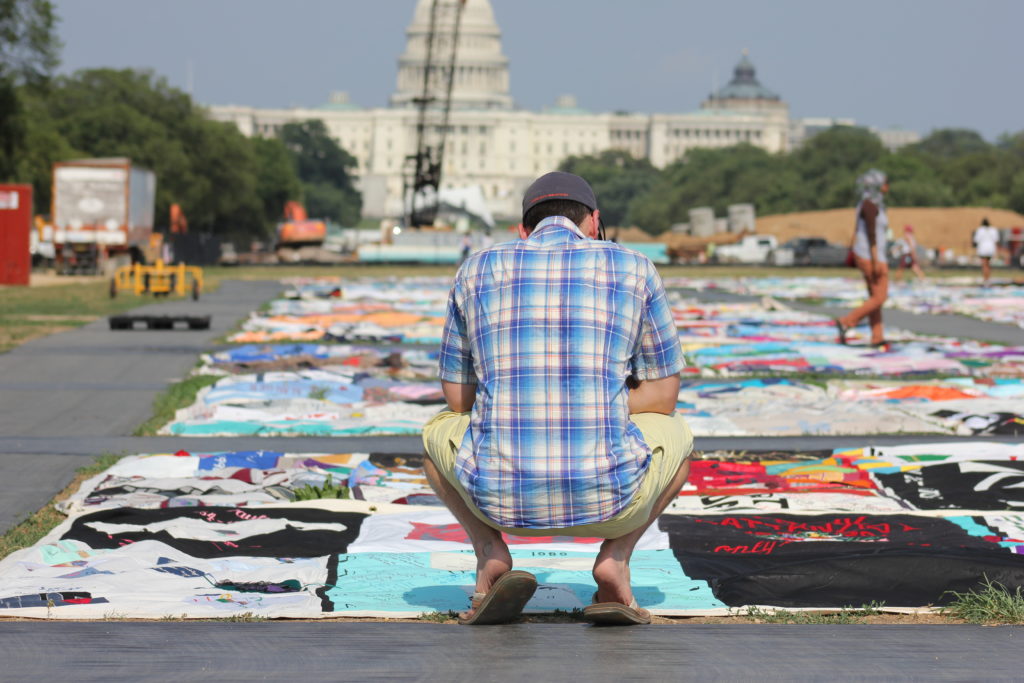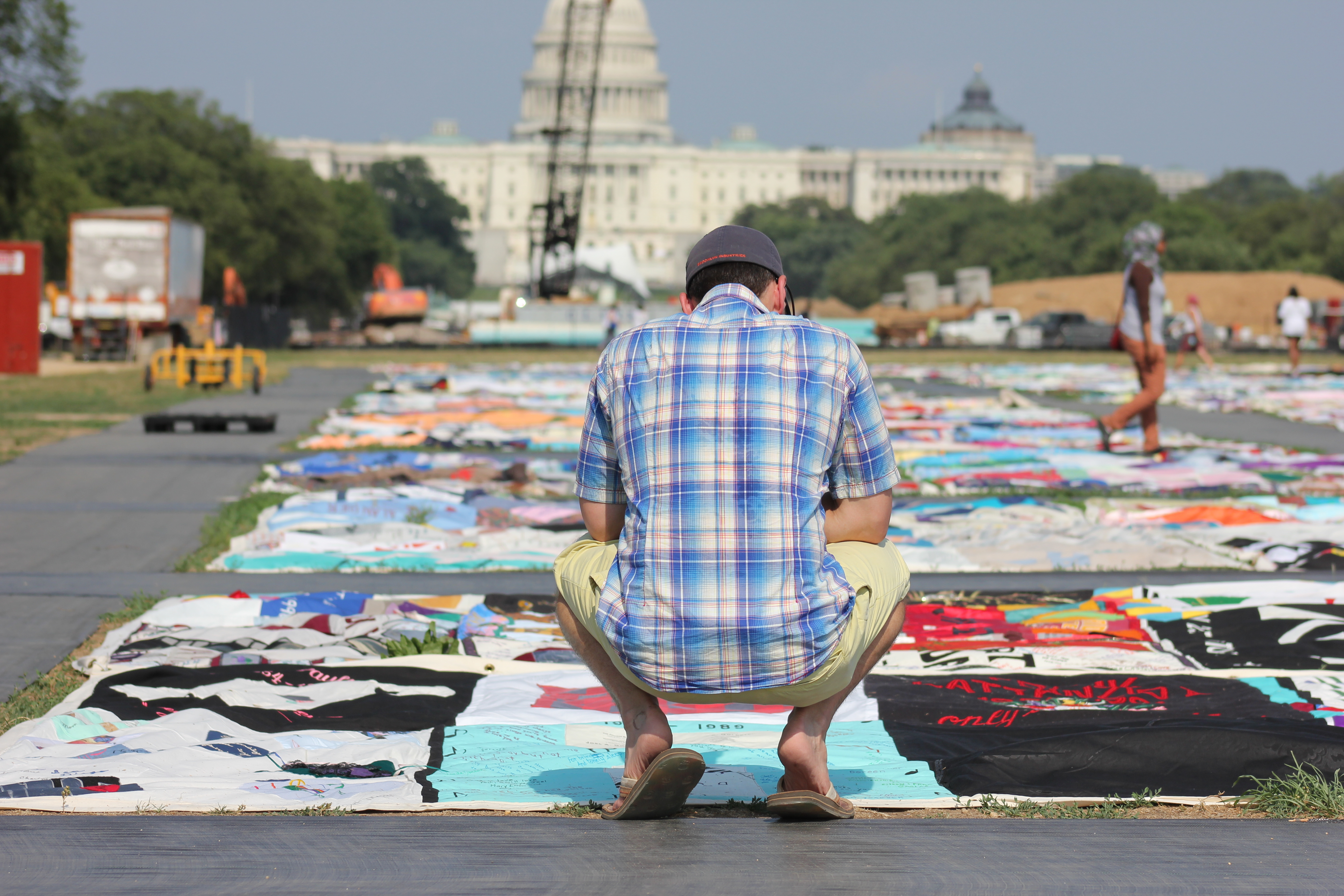On July 3, 1981, The New York Times reported on a “rare gay cancer” that had been seen in 41 men. Although no one realized it at the time, the article by reporter and medical doctor Lawrence K. Altman was the first major news story on what would become the HIV/AIDS pandemic. It took another year and two months before the CDC used the term AIDS — acquired immunodeficiency syndrome — to put a name to the “cancer.”
Nearly 40 years later, The New York Times reported again on the early signs of a different global infection. The story from China, published on Jan. 6, 2020, described 59 people sickened in the central city of Wuhan by a “pneumonia-like illness.” That illness was the coronavirus, or Covid-19, the disease caused by a viral infection that has spread across the globe.

Stigmas Born of Fear
Because of the stigmas surrounding AIDS as the disease of homosexuals and heroin users, coverage was much more scarce than that of the coronavirus.
“There’s no comparison,” said Michele Zavos, a Washington D.C.-based attorney at law with a majority of clients in the LGBTQIA+ community. “The reason for that is because mainstream culture, the political administration really denigrated gay men, and in the beginning, it was gay men. And then it spread more to the Black community and Black women and to drug users, and so it became more and more widespread. As long as it was gay men, mainstream culture didn’t care, but then eventually mainstream culture figures started dying, so that started changing.”
Zavos acted as the director of the American Bar Association’s AIDS Coordination Project — an initiative to inform lawyers of the legal issues around HIV/AIDS — from 1990 to 1996 and has published articles concerning those legal issues.
She credits Rock Hudson, a TV and movie star, whose career spanned from 1948 to 1985, with bringing international attention to the disease. One of the first mainstream figures to die from AIDS, Hudson searched the world for a cure.
Patricia D. Hawkins, Maryland-based executive director of the DC Community AIDS Network, who has a doctorate in psychology with a medical specialization, attributes the lack of coverage in the early years of the AIDS pandemic to the stigmatizations and fear surrounding the disease.
“My spouse is also a clinical psychologist, and the other docs wouldn’t even eat lunch with her” after she began working with AIDS patients, she said. “The same thing happened with me. They were so afraid of getting the disease because they didn’t know how it was transmitted.”
But contraction of the disease was not the only issue for those working with AIDS patients.
“You were immediately considered to be gay, whether you were or you weren’t, and whatever attitudes people had toward gay people, they extended toward people with AIDS,” Hawkins said.
While the coronavirus does not have the CDC’s “four h’s” to avoid like AIDS did — homosexuals, heroin users, hemophiliacs and Haitians — racist attacks on Asians have increased around the globe as the coronavirus has spread. President Donald Trump has repeatedly referred to Covid-19 as the “China virus.”
People of color also have been disproportionately impacted by the disease. The Los Angeles Times reported on July 19 the infection rate for Pacific Islanders in L.A. County was six times that of the white population. The New York Times reported on July 5 the infection rate for Black Americans tends to be higher because of systemic inequities that force many into front-line jobs, public transit and close living quarters. In the Midwest, the first deaths from Covid-19 in Chicago and St. Louis were African-Americans.
Politicization of Human Lives
In the early days of the AIDS pandemic, President Ronald Reagan allowed the AIDS crisis in America to accelerate with a lack of attention to safety. Instead, his administration discredited the severity of the situation.
According to the CDC, between 1981 and 1990, over 100,000 people with AIDS died — Reagan’s presidency lasted from 1981 to 1989. By August, Trump said the coronavirus “is what it is.” Nearly 200,000 Americans have died since the virus was first detected in the United States half a year ago.
Douglas M. Foster, Chicago-based writer and professor of journalism at Northwestern University, pointed out the similarities between Trump and Reagan’s presidencies as one of the major similarities between the viruses.
“Ronald Reagan was president, and it took him several years of death and dying to even say the word AIDS,” he said. “His press secretary made jokes about it. If reporters assigned to the White House asked about it, he would laugh and say, ‘Why? Do you have it?’”
New Orleans- and New York-based journalist, author and activist Anne-christine d’Adesky attributes the politicization of masks to Trump.
“There are hurdles to accessing information and to applying information,” she said. “We see that today with the mask issue. I truly believe that because President Trump was and is afraid of not getting reelected, he has adopted an anti-science platform. He has equated not wearing a mask with personal liberty and put the lives of millions of Americans and other people at risk for exploitation of Covid. It’s a tragedy, and it’s very political.”
She said both AIDS and Covid-19 have been politicized but in different ways. Both, however, she said, play on fear and prejudice, and the way to fight against that is with information and informed decision-making.
This is where the press comes in. Because the Trump Administration continues to spread false information — for instance, Trump’s renewed push for hydroxychloroquine as a Covid-19 medication, which Dr. Anthony Fauci, who advised six presidents on the AIDS pandemic, continues to refute — it is the press’s duty to avoid spreading misinformation while also reporting that the information he spreads is, as he would say, “fake news.”
“Particularly in the early stages of that pandemic, there was no useful information in mainstream media for many years,” Foster said. “There was a sense that mainstream media didn’t include gay men and lesbians. There was an assumption that newspapers were family matters, and therefore it would not be appropriate to use the language that would make clear how the virus was spread — semen and blood, for example. And there was no explicit mention of various forms of sexual transmission.”
During the early years of the AIDS pandemic, people craved knowledge on a disease that was not being tended to, in large part, by their political and religious leaders. Now, during the Covid-19 pandemic, what people need is harm prevention from those same people.
“Every community knows its own leaders, its own solutions, its own ways to get information,” said d’Adesky. “It’s going to be the pastors and churches, it’s going to be the people who do the food banks, it’s going to be the local leaders and it’s going to be the sports coaches and all these folks who are community leaders who are going to be delivering the message that’s going to be heard by people within their communities.”
Many newspapers did not report on AIDS due to the stigmas surrounding the ways it spreads, and the ramifications of this failure to seek out the truth and report it are clear, Foster noted.
Medical Masks and Condoms and Dirty Needles
“It’s the human condition that we would prefer to not look at what may scare us,” said d’Adesky. “We would prefer not to be uncomfortable, so I think that many people in America … said, ‘That’s only relevant to people who are engaging in sex that’s not the sex I engage in.’”
She also cited the Catholic Church and federal authorities as roadblocks on the way to AIDS prevention, with the Church’s ban on condoms and the authorities’ reluctance to accept disposable needles as harm reduction for heroin users.
“There was this huge campaign about clean needles — wanting people to bring in dirty needles, and they would get a clean needle, no questions asked,” said Zavos. “Of course, a lot of the government went berserk over this, [saying,] ‘You’re helping people be drug users.’”
Michael O’Loughlin, Chicago-based national correspondent for America Magazine: The Jesuit Review and the host of the podcast “Plague: The Untold Stories of AIDS and the Catholic Church,” said one criticism of the Catholic Church was it’s political response to the use of condoms during the early years of the AIDS pandemic.
O’Loughlin explained that while the Catholic Church had some high-ranking bishops who said condoms were okay as long as they helped prevent the spread of disease instead of pregnancy, the Vatican and a powerful, conservative group of U.S. bishops prohibited all use, applied and educational.
“The issue was the Church is a very powerful player, especially in big cities,” O’Loughlin said. “It was actually using its political power to prevent public health education about the effectiveness of condoms.”
Just as studies have found needle exchanges and condoms have helped to prevent the spread of HIV, studies have also found masks help prevent the spread of Covid-19.
D’Adesky attributed today’s fear of masks as stemming from the initial concerns of the Trump administration regarding a scarcity of protective personal equipment (PPE) and the federal effort to prioritize access of N-95 masks specifically, to healthcare workers and frontline essential workers.
Hawkins compared wearing masks to wearing an awareness AIDS pin in that people are and were harassed for wearing each in public.
How journalism and other media can offer support to the cause of getting everyone on board with wearing masks is not only to normalize them but to make them cool.
Many articles about masks revolve around how to wear them safely, and one New York Times article pleads in the title for the public to “Seriously, Just Wear Your Mask.”
Cosmopolitan has already done pieces like this — “Are Face Masks the Latest It-Accessory?” and “5 People on What It’s Like to Have Sex with a Mask On.”
Publications do not have to hide from stigmas like they did with condoms and needles. Masks can be, as Cosmo puts it, “the latest it-accessory.”
Back to the Future
Just as the 1980s saw the popularization of condoms — due to HIV — and consumerism — due to the advent of malls and Madonna — the 2020s could see the popularization of masks due to consumerism. And while looking to the past to inform the future is not a new concept, it is an important one.
In medicine: From her work as a clinical psychologist, working with AIDS patients, Hawkins can foresee that survivor’s guilt could be a heavy burden for former Covid-19 patients and their families to bear in the future.
In hope for a cure: With his historical research for “Plague: The Untold Stories of AIDS and the Catholic Church,” O’Loughlin found the cautionary parallel between the search for the cure of HIV and Covid-19.
“When I see the stories today about how a vaccine is just a few months away and there might be one by the end of the year, it makes me cringe a little bit,” he said. “Obviously science is very different. The coronavirus is not HIV. But there was this hope for a cure that would end the HIV and AIDS crisis very quickly that did not materialize. … Science takes time. It takes cooperation. It takes money.”
In journalism: D’Adesky noted what past journalism on AIDS is doing for current reporting on the coronavirus.
“We have applied and been able to benefit from the lessons of the early AIDS reporting,” she said.
Summer Hoagland-Abernathy is a journalism and playwriting B.A. student at Columbia College Chicago, where she is the Opinions Editor at the school’s newspaper The Columbia Chronicle. Follow her on Twitter @shoaglanda.

